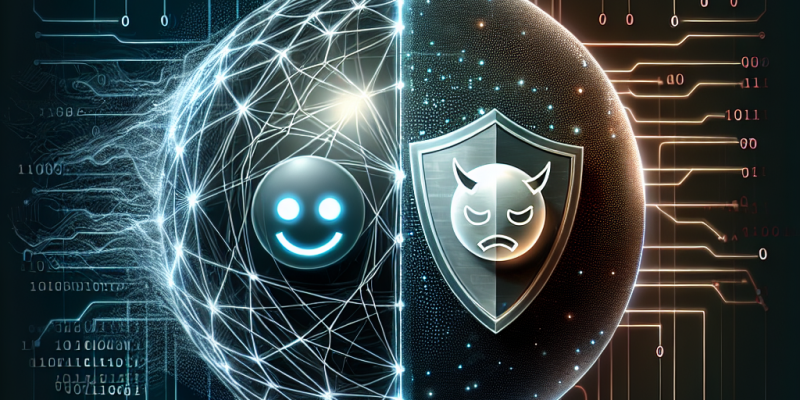The Impact of AI on Cybersecurity: Friend or Foe?

In an increasingly digital world, the intersection of artificial intelligence (AI) and cybersecurity has emerged as a pivotal area of interest for technology professionals, businesses, and consumers alike. As cyber threats grow more sophisticated, AI technologies are being implemented as both a defensive tool and, paradoxically, a potential weapon for malicious actors. The duality of AI’s role in cybersecurity raises critical questions: Is AI a friend that enhances our ability to combat cybercrime, or a foe that introduces new vulnerabilities?
The Dual Role of AI in Cybersecurity
AI as a Defender
AI’s potential as a cybersecurity ally lies in its ability to process vast amounts of data quickly and identify anomalies that may indicate cyber threats. Here are some ways AI enhances cybersecurity defenses:
-
Threat Detection and Response: Machine learning algorithms can analyze network traffic in real-time, detecting unusual patterns and flagging potential breaches before they escalate. Traditional security systems often rely on predefined rules, leaving them vulnerable to novel threats. AI, however, learns from new data, adapting to evolving cybersecurity landscapes.
-
Behavioral Analysis: AI systems can establish a baseline for normal user behavior within an organization. By continuously monitoring for deviations, these systems can identify insider threats or compromised accounts, often before human analysts can detect such issues.
-
Automation: AI can automate repetitive tasks such as log monitoring, updates, and patch management, allowing human teams to focus on more strategic initiatives. This not only improves efficiency but also reduces the risk of human error, which remains a significant factor in many security breaches.
- Incident Response: In the event of a cyber incident, AI can assist in triaging alerts and prioritizing responses based on the level of threat, effectively streamlining the incident management process.
AI as a Foe
While AI holds promise as a cybersecurity tool, it also presents challenges, particularly in the hands of cybercriminals who exploit it to enhance their attacks:
-
Automated Attack Campaigns: Cybercriminals can use AI algorithms to perform sophisticated attacks at scale. For instance, AI can generate phishing emails that are more convincing by analyzing past successful templates or even creating deepfakes to manipulate victims.
-
Evasion Techniques: Attackers can leverage AI to create malware that adapts and changes its behavior to evade detection by traditional security systems. This adaptability makes it more difficult for defenders to catch evolving threats.
-
Data Poisoning: AI systems depend on data to learn; thus, adversaries can attempt to poison training datasets, leading to incorrect conclusions and ineffective defenses. This manipulation can make AI-based systems unreliable at crucial moments.
- Cyber Warfare: On a geopolitical level, nations may harness AI technologies to launch cyberattacks against adversaries, leading to destabilizing incidents that could have far-reaching effects well beyond the digital realm.
The Balancing Act
The interaction between AI and cybersecurity is complex. For every innovation that strengthens defenses, there may be a corresponding tool that could amplify attacks. The key to navigating this duality lies in balance and strategic implementation.
Building Resilience
Organizations must invest in robust cybersecurity frameworks that integrate AI tools while remaining vigilant about the potential misuse of such technologies. This includes:
-
Continuous Learning: Security teams should regularly update their algorithms and threat models to stay ahead of evolving attack vectors.
-
Collaboration: Sharing insights across the cybersecurity community can bolster collective defenses against emerging threats.
- Ethical Guidelines: As AI continues to permeate the cybersecurity landscape, the development of ethical guidelines is essential to ensure responsible use and mitigate risks associated with its misuse.
Regulatory Measures
Governments and regulatory bodies must also play a proactive role in establishing regulations that manage the use of AI in both cybersecurity and cybercrime. This includes frameworks that promote transparency and accountability among organizations leveraging AI technologies.
Conclusion
The impact of AI on cybersecurity is profound, offering both immense capabilities and new challenges. Whether AI acts as a friend or foe ultimately depends on how organizations, governments, and cybersecurity professionals choose to embrace and govern this powerful technology. As we venture further into the era of AI-driven cybersecurity, promoting rigorous ethical standards and collaborative practices will be essential in leveraging its benefits while mitigating its risks. The journey ahead will require vigilance, adaptability, and strong partnerships to ensure a safer digital future for all.














